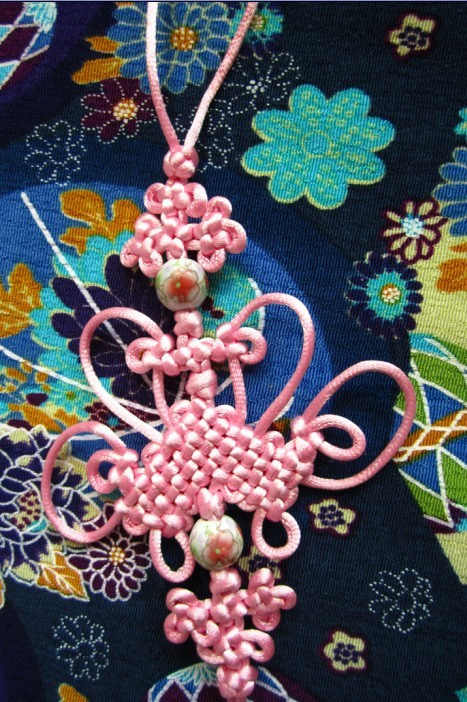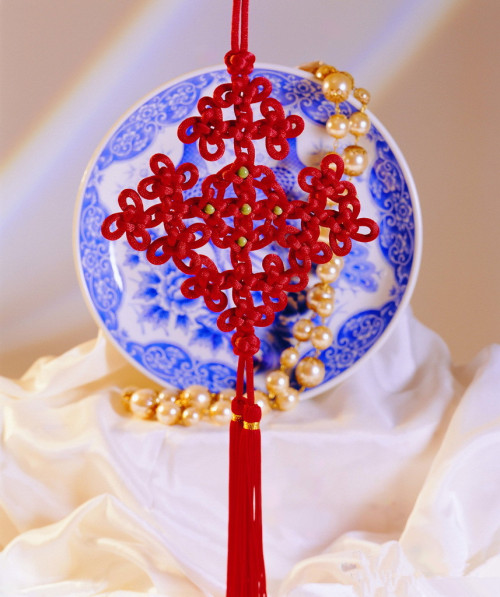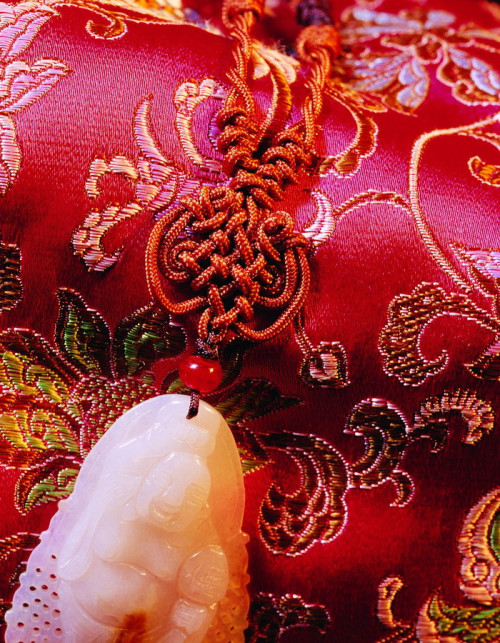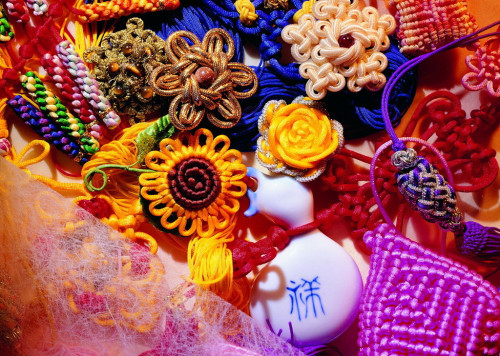mingsonjia:Chinese knotting (TC:中國結; SC:中国结;pinyin: Zhōngguó jié) is a decorative handicraft art tha
mingsonjia:Chinese knotting (TC:中國結; SC:中国结;pinyin: Zhōngguó jié) is a decorative handicraft art that began in the Tang and Song Dynasty (960-1279 AD) in China. It is used as a decoration for rooms, fans, folding screens, musical instruments etc. and an accessory for clothing (mostly go with jewelries like jades). Chinese knots are usually lanyard type arrangements where two cords enter from the top of the knot and two cords leave from the bottom. The knots are usually double-layered and symmetrical.Some of the earliest evidence of knotting have been preserved on bronze vessels of the Warring States period (481–221 BCE), Buddhist carvings of the Northern Dynasties period (317–581) and on silk paintings during the Western Han period. Further references to knotting have also been found in literature, poetry and the private letters. In the 18th century, one novel that talked extensively about the art was “Dream of the Red Chamber”. It is mentioned that the knots were used as gifts for relatives and friends, also as a token of love depending on different types of knots. -- source link
Tumblr Blog : mingsonjia-deactivated20170120.tumblr.com
#chinese








